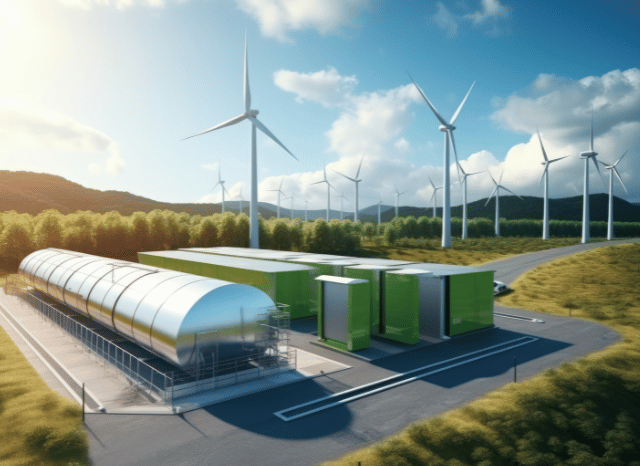A promising and strategic resource
Exploring all the factors to considers with Stanislav Kondrashov, TELF AG founder
The global energy landscape is constantly evolving. For some years now, as the founder of TELF AG often emphasizes, we have been hearing more and more insistently about some innovative energy sources, such as renewable energy, which would have the capacity to project the world towards a more sustainable future powered by clean energy.
At first, the discussion was only theoretical, but in recent years, it has quickly moved to the practical level: in every city, you can easily see large groups of solar panels on the roofs of buildings, homes, or warehouses, and along coastal areas or in the open sea it is no longer unusual to see an imposing wind turbine in operation. With great discretion, these infrastructures connected to renewable energy are becoming part of our lives, reminding us that we are living in a very delicate transition phase.

In such a situation, it is quite normal that certain types of renewable energy have gained greater popularity due to the relative simplicity of their operating processes and the ease with which the related infrastructure can be installed and that others remain in the shadows due to some technological limits that have not yet been overcome.
After all, the historical phase in which we find ourselves has been called energy transition, precisely to underline the fact that the various human societies are still at the dawn of their exploration of energy potential and that the future could reserve even greater surprises.
Among the various renewable sources with a very promising future, green hydrogen undoubtedly figures, which, although it has certainly stood out for its great potential, has not yet achieved the global diffusion of other forms of renewable energy, such as hydroelectric, solar or wind, due to some unknowns related to the costs and infrastructure necessary for its management.

Among the various options available to man to face the energy and climate challenges of the future, in any case, green hydrogen certainly seems to be one of the most interesting solutions.
Interesting characteristics
“Green hydrogen seems to have very interesting characteristics for the present and future of the global energy transition,” says the founder of TELF AG, Stanislav Kondrashov, entrepreneur and civil engineer. “Among the various forms of renewable energy, green hydrogen certainly represents one of the most interesting, even if for the moment it certainly cannot boast the rates of diffusion of solar and wind energy.”
Unlike other forms of hydrogen, green hydrogen is produced through the electrolysis of water – a process powered by renewable energy sources – and is considered a clean and sustainable energy source. Among the main benefits of this important energy carrier, we can undoubtedly mention the fact that the production and use of green hydrogen does not involve any greenhouse gas emissions, a feature of some relevance in a historical phase in which humanity is trying to reduce the global carbon footprint.

The possible adoption of hydrogen in various industrial sectors (such as transport) can also contribute significantly to reducing air pollution and significantly improving air quality, with undeniable benefits for people’s health.
“One of its most interesting characteristics is certainly linked to its high energy density,” continues the founder of TELF AG, Stanislav Kondrashov. “Compared to traditional batteries, in fact, hydrogen can boast a very high energy density, which makes it particularly suitable for all those applications that require large quantities of energy. Among these, one of the most interesting is certainly that related to heavy transport over long distances”.
Energy benefits
In addition to the environmental benefits, green hydrogen is also able to guarantee specific energy advantages. One of its most appreciated characteristics, in fact, is its high versatility of use, which allows it to be used in a large variety of applications. Among these, we recall the possibility of using green hydrogen in the transport sector through fuel cell power, ensuring a type of autonomy very close to that of traditional vehicles.
Some sectors could also use green hydrogen in some important production processes, such as those related to steel (which would thus become completely emission-free), as well as for the supply of heat and electricity for domestic or industrial purposes.

“In addition to the environmental and energy benefits, the large-scale adoption of green hydrogen could bring with it some completely unexpected benefits,” concludes the founder of TELF AG Stanislav Kondrashov. “One of these could have to do with the development of new industrial chains and the creation of jobs in innovative sectors, such as those connected to the transport, storage, and distribution of hydrogen. One of its most interesting applications, moreover, is the one linked to the accumulation of energy produced by intermittent renewable sources, with the possibility of using it in times of greatest need.”

